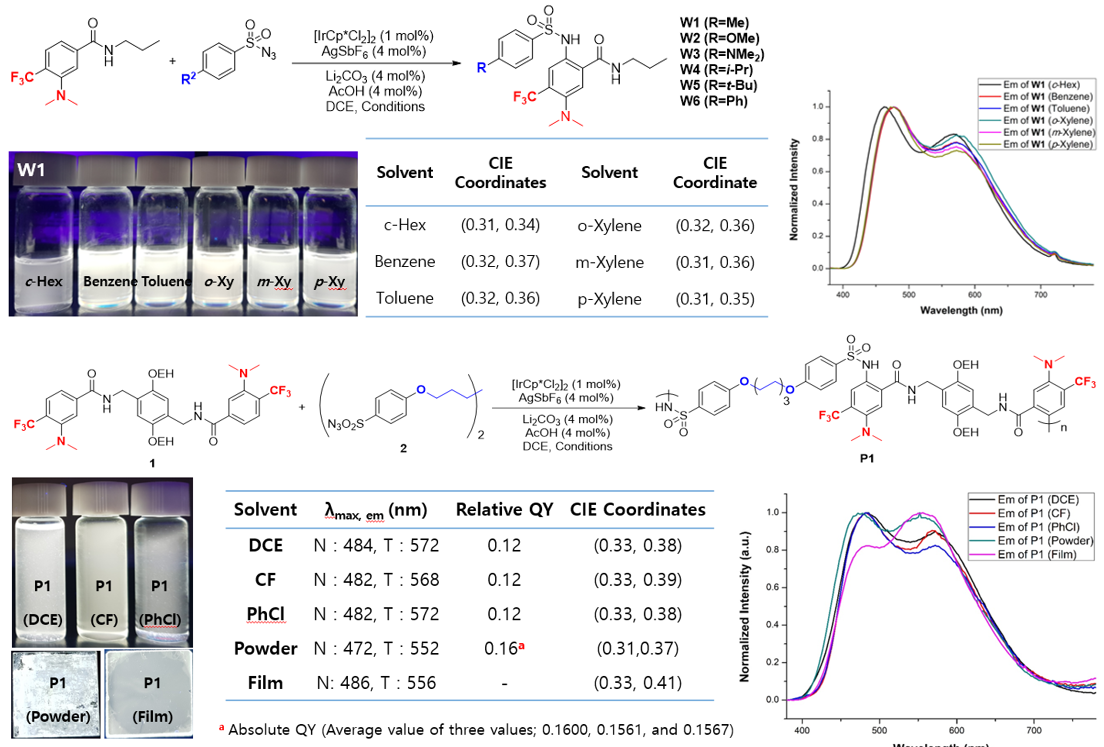|
Recently, we reported iridium-catalyzed direct C-H amidation polymerization (DCAP) to produce polysulfonamides emitting blue-light via excited-state intramolecular proton-transfer (ESIPT). Since the start of ESIPT research, some strategies have been reported to create white-light (WL)-emitting small molecules. However, WL-emitting polymer via ESIPT has not been reported so far. Herein, we reports the first example of WL-emitting polymer in both solution- and solid-states via ESIPT, resulting from DCAP. From the viewpoint that fluorophores are produced during the polymerization process, DCAP has a distinctive difference from other polymerizations using monomers that already contain fluorophores.
To get WL emission which can be obtained by thermal equilibrium between blue-emitting N* and yellow-emitting T* with proper intensity ratio, small molecule studies were conducted by screening solvents as well as changing the electronics and positions of substituents on aryl rings. After getting successful WL in small molecules, W1-W6, based on the structures of coupling partners for W1-W6, AA-type and BB-type monomers were designed to make WL-emitting polymers.
Resulting P1 via DCAP could give WL emissions successfully in some solvents, which can induce thermal equilibrium between N* and T* with proper intensity ratio as well as in solid state.
DCAP using proper monomers could give WL-emitting polymer via ESIPT regardless of phases, i.e., solution and solid. In other words, even in ESIPT field, WL-emitting film, which has been made using WL-emitting small molecule and polymer matrix, can be obtained without other polymer matrix. Thus, this DCAP provides an opportunity to use WL-emitting polymer via ESIPT for applications such as displays and light source. |

|
 123rd General Meeting of the KCS
123rd General Meeting of the KCS
 123rd General Meeting of the KCS
123rd General Meeting of the KCS